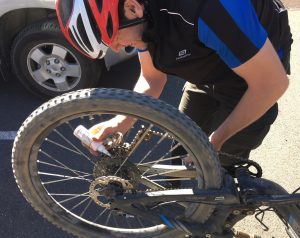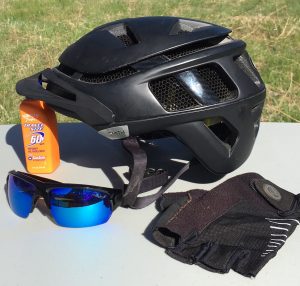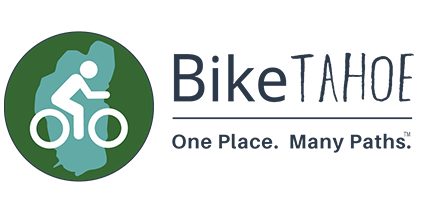Getting ready for bike season is always exciting and an important step in helping promote many months of safe and enjoyable riding.
If your bike has been in storage during the winter, or not used in a while, it is always a good idea to follow these 12 basic inspection tips for getting ready for bike season.
12 Basic Inspection Tips For Getting Ready for Bike Season
Prepping Your Bike

Clean and lube gears regularly
Clean it – Use a damp cloth and wipe it clean after a muddy ride or periodically throughout the season. You can use a mild soap, water, cloths or sponges. Avoid high-pressure systems on places where there are seals. Keeping it clean can also expose any cracks or damage to the frame and other parts.
Check tires – Keep them properly inflated to roll more efficiently and help avoid pinch tube flats. Tire pressure ranges are located on the side of the tire. Use a floor pump with a pressure gauge to inflate at desired setting – and periodically check your tire pressure before each ride.
Clean rims – Mud and road grime can build up on the rims and reduce braking effectiveness. Clean the rims and inspect the brake pads. Remove any metal or small stones from the pads as these can gouge the rims over time. If pads are glazed, either replace them or use sandpaper on them to clean and increase braking power.
Test brakes – Pull on the brake levers to make sure the brake pads press against the rims (rotor for disc brakes) evenly and stop your wheel. Check the brake pads to make sure their entire length presses against the rim and are not lose or wobble. If they are loose or worn, replace them.
Inspect all cables – Inspect cables and surrounding rubber housing for cracks, crimps, rust, dirt and looseness. Clean fully functioning cables make shifting and braking smooth and increase performance. If in doubt, have your local bike shop inspect them.
Check wheels – Pick up one end of your bike and spin a wheel. Does it wobble or track straight? If there is wobble, the spokes will likely need adjustment. Take it to your local bike shop for adjustment.
Inspect drive train – Check you gears, chain and derailleurs for cleanliness and proper functioning. Be sure they are clean and well lubricated. Apply a dry lubricant to the cog (gears on the back wheel), chain-ring (front gear), chain and moving parts. Wipe excess lube with a dry cloth so not to attract the accumulation of dirt and grime. Shift your gears through their ranges to ensure proper functioning.
For You

Personal Care items for safety
Inspect Your Helmet – Check for cracks and proper fit. Should you notice a crack, replace it immediately as it will no longer provide sufficient protection. Check fit and make proper chinstrap adjustments – just below the chin (not too tight against the chin or too loose to cause movement).
Eye Protection – Eye-wear protects your eyes from bugs, debris, glare, and UV damage. Wear sunglasses.
Gloves – Bike specific gloves can increase gripping power and bike control. For long distance rides or mountain biking, there are gloves with gel filled padding that can increase comfort on your hands.
Clothing – Be seen and ready. Wear high visibility clothing when riding near motor vehicles. It is also a smart plan to take along a lightweight stuff-able windbreaker in the event of changing weather.
Tool Kit – Have the following basic items before going on a ride to help prepare you in the event there is a minor breakdown:
- Spare tube (even when running tubeless)
- Tube patch kit (patches, sandpaper, glue – check glue before ride as they can dry out)
- Tire levers (2)
- Mini multi-tool (metric)
- Mini air pump and/or CO2 cartridges
- Money or credit card
- Personal identification
- Option – cell phone for emergencies
These 12 basic inspection tips are helpful in getting ready for bike season. Should you notice any irregularities on your bike, have questions, or need assistance, consider going to your local bike shop for the expertise to get you riding safely and happily.
Enjoy your biking season and see you on the trails.


